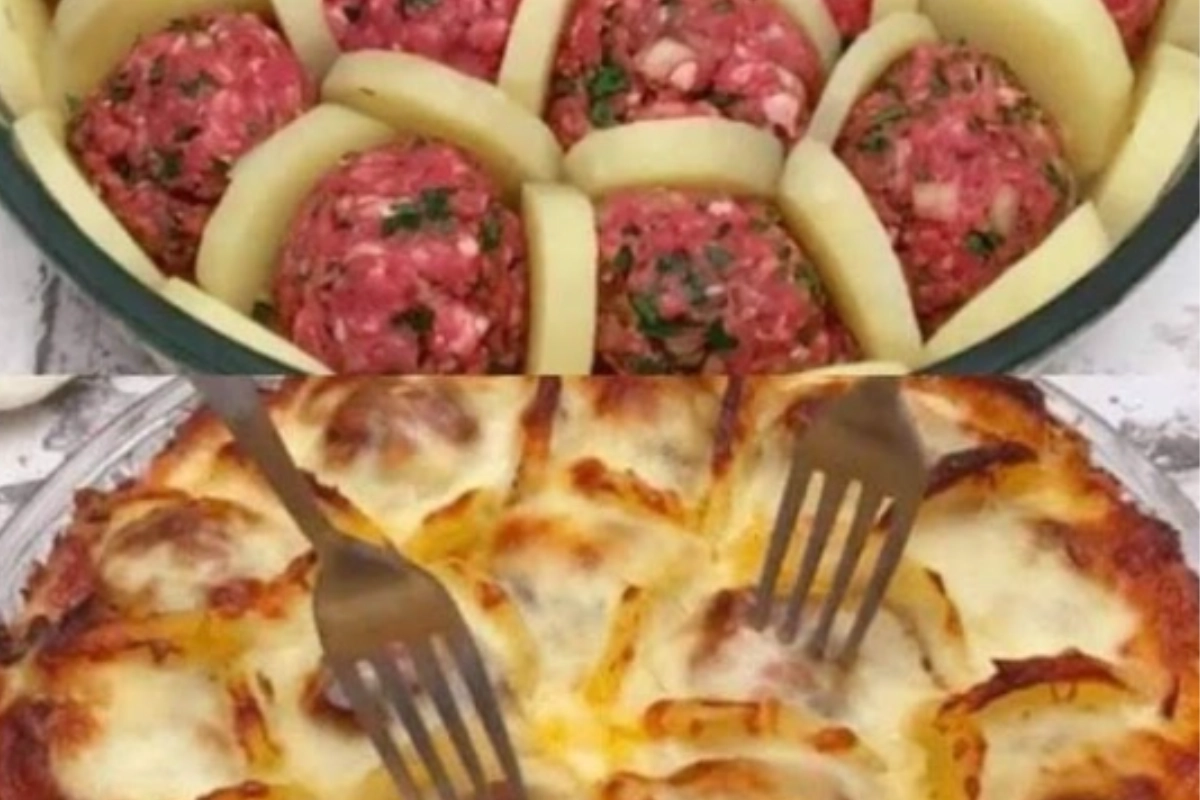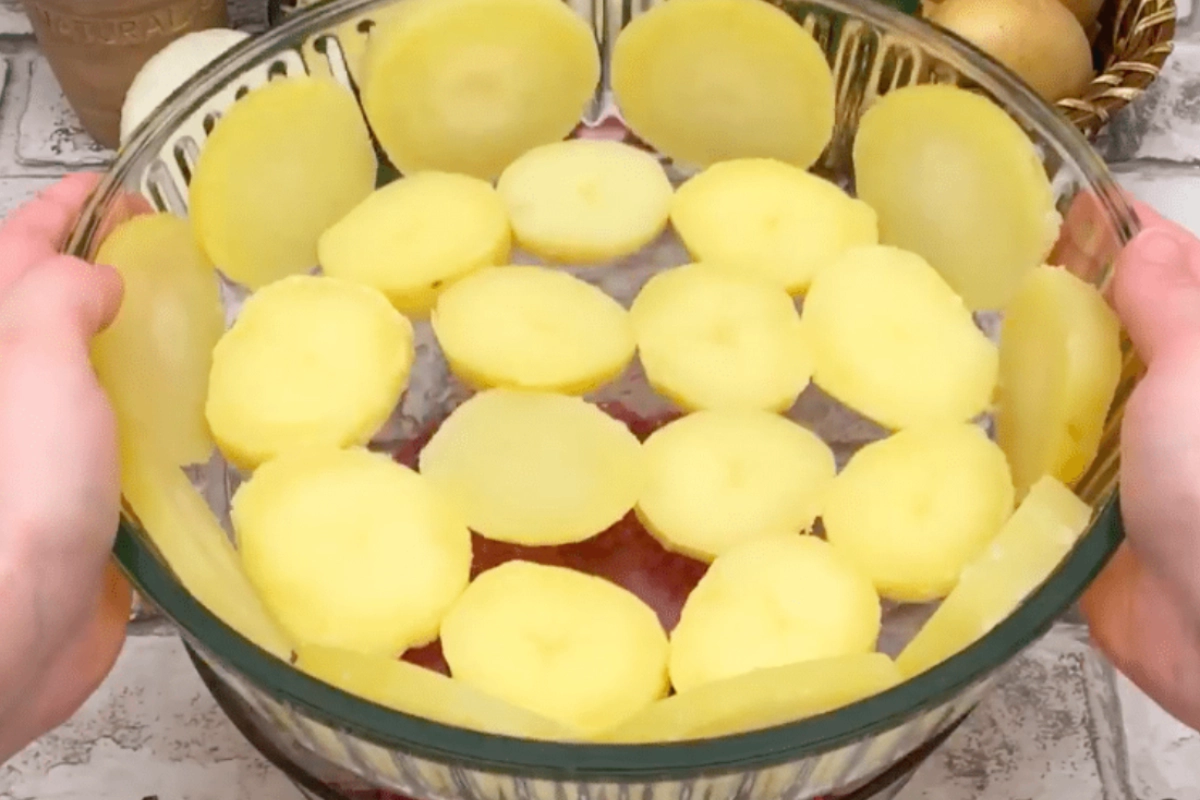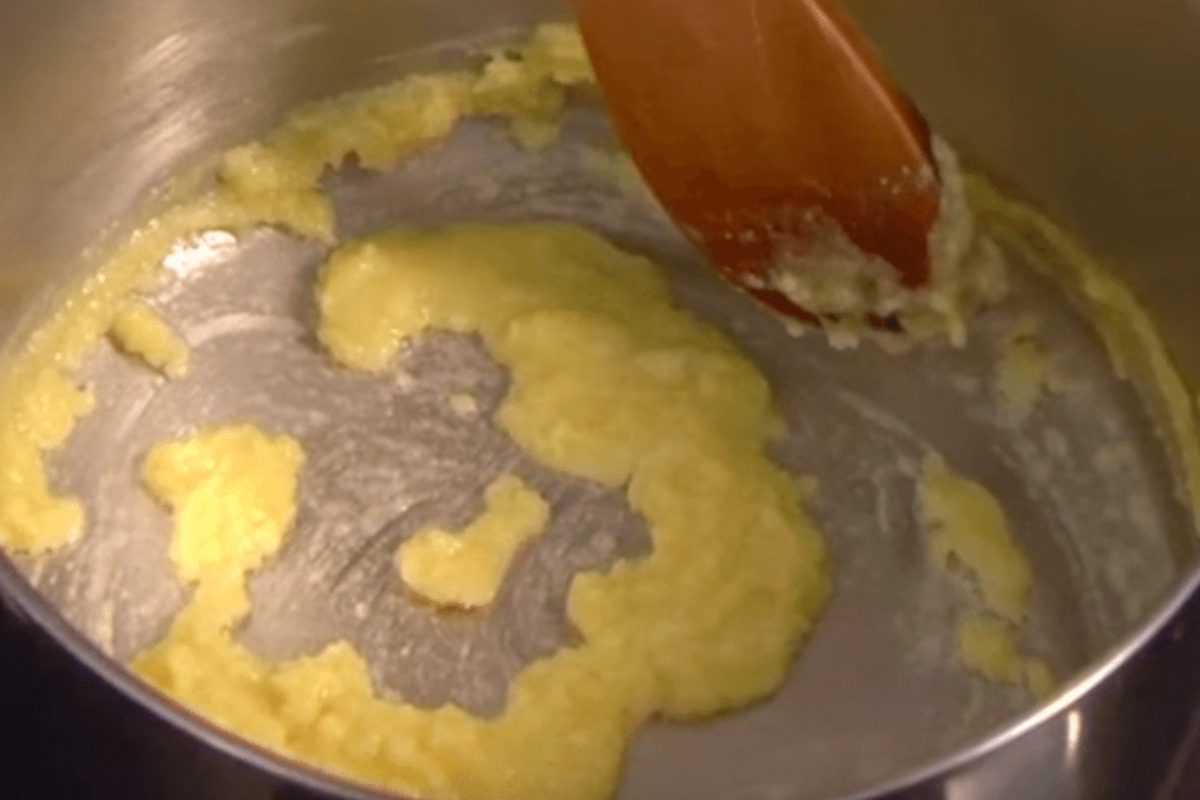Selecting the Right Potatoes
Choosing the Best Variety
Before you even fill your pot with water, the first step is selecting the right type of potato. Not all potatoes are created equal—some varieties are better suited for boiling and slicing than others. For a dish that requires firm slices, waxy potatoes like Red Bliss or Yukon Golds are your best bet.
Inspecting for Quality
The quality of your dish starts with the quality of your ingredients. When picking out potatoes, look for firm, smooth ones free from soft spots, sprouts, or green tinges. A fresh potato will have a solid feel and a clean, earthy smell.
Preparing Potatoes for Boiling
Preparation is key to ensuring your potatoes boil evenly. Start by washing them under cold running water to remove any dirt. Depending on your preference and the recipe you’re following, you can either peel them or leave the skins on.
Mastering the Boil
The Perfect Boiling Technique
Achieving the perfect boil begins with understanding the simple, yet crucial, steps that lead to flawlessly cooked potatoes. The process is straightforward but requires attention to detail to ensure your potatoes come out just right.
Water to Potato Ratio
Start by placing your prepared potatoes in a large pot and cover them with cold water. The water should be about an inch higher than the potatoes. This ensures even cooking and prevents the potatoes from becoming too soft or too hard. Cold water is essential as it heats gradually, allowing the potatoes to cook thoroughly inside without the outsides becoming overdone.
Salting the Water
One common mistake is underestimating the power of salt. Adding salt to the boiling water is not just a minor detail; it’s a game-changer. Salt penetrates the potatoes, seasoning them from the inside out and enhancing their natural flavors. A good rule of thumb is to add one teaspoon of salt per quart of water.
Boiling Time
The boiling time depends on the size of your potato pieces. Smaller cubes might take around 15 minutes, while larger chunks or whole potatoes can take 20 to 25 minutes. The key is to start checking for doneness around the 15-minute mark by piercing a piece with a fork. If it slides in easily with little resistance, your potatoes are done.
Monitoring the Boil
Maintain a gentle boil throughout the cooking process. A vigorous boil can break the potatoes apart, especially those with a softer texture. Adjust the heat as necessary to keep the boil steady and gentle.
Draining and Cooling
Once boiled to perfection, drain the potatoes in a colander immediately. This stops the cooking process and prevents them from becoming mushy. If you’re preparing a salad or need the potatoes to hold their shape, cooling them under cold running water or in an ice bath will cool them quickly and help firm up the texture.
The Art of Slicing Boiled Potatoes
After mastering the boiling process, the next step in your potato preparation journey is slicing them to suit your recipe’s needs. Whether you’re aiming for elegant, thin slices for a gratin or chunky pieces for a hearty salad, how you slice your potatoes can significantly impact the dish’s texture and appearance.
Cooling Before Slicing
It’s crucial to let your boiled potatoes cool down enough to handle. This not only makes slicing safer but also helps in achieving cleaner cuts. If your recipe calls for warmer potatoes, ensure they’re just cool enough to handle safely without compromising your dish’s desired temperature.
Choosing the Right Knife
A sharp, non-serrated knife is your best friend for slicing boiled potatoes. Serrated knives can tear the tender flesh, resulting in jagged edges. A sharp chef’s knife will glide through the potato, allowing you to control the thickness of each slice effortlessly.
Consistency is Key
Consistent slice thickness is crucial for cooking evenly. Decide on the thickness that best suits your dish and stick to it. For salads or side dishes where the potato is a standout ingredient, thicker slices can provide a satisfying texture. For casseroles or layered dishes, thinner slices ensure they cook evenly and integrate well with other ingredients.
Techniques for Different Cuts
- For Cube Cuts: Start by slicing your potato lengthwise into even slabs. Stack a few slabs at a time, then cut them lengthwise again to form sticks. Finally, cut across the sticks to create cubes. This method is perfect for potato salads or breakfast hashes.
- For Round Slices: Hold the potato steady and slice directly down, keeping each slice consistent with the next. Round slices are ideal for dishes like potato au gratin or layered potato bake.
- For Wedge Cuts: Cut the potato in half lengthwise, then place the flat side down for stability. Slice each half into even wedges, adjusting the size based on your recipe’s requirements. Wedges are great for roasting or as a rustic side dish.
Preventing Discoloration
If you’re not going to use your sliced potatoes immediately, keeping them from browning is essential. Submerge the slices in cold water until you’re ready to use them, which prevents oxidation and keeps your potatoes looking fresh.
Slicing boiled potatoes is more than just a step in your cooking process; it’s an opportunity to enhance your dish’s texture, presentation, and overall appeal. With the right techniques, you can transform this humble ingredient into a culinary delight.
In the next segment, we’ll explore how to season and enhance your boiled and sliced potatoes, adding layers of flavor that will elevate your dish from good to unforgettable.
Perfect Potato Slices – Explore innovative ways to slice and present potatoes, adding a touch of elegance and creativity to your dishes.
Seasoning and Flavor Enhancement
Once you have your perfectly boiled and precisely sliced potatoes, the next step is to season and enhance their flavor. This stage is where your culinary creativity truly shines, allowing you to transform plain potatoes into a delectable component of your meal. Seasoning is not just about salt; it’s an art that involves balancing various flavors to complement the natural taste of the potatoes.
The Basics of Seasoning
Salt and Pepper: The Essentials
- Start with the basics: salt and pepper. These two seasonings are fundamental, but their importance can’t be overstated. Salt enhances the potato’s natural flavors, while pepper adds a subtle heat and complexity. Use sea salt or kosher salt for a cleaner, brighter taste, and freshly ground black pepper for the best flavor.
Herbs and Spices
- Herbs and spices can transform the humble potato into a culinary masterpiece. Rosemary, thyme, and oregano are excellent choices for a savory touch. For a bit of warmth and spice, consider paprika, cumin, or a pinch of cayenne pepper. Fresh herbs should be added towards the end of cooking to preserve their vibrant flavor, while dried herbs and spices can be introduced earlier to infuse the potatoes thoroughly.
Incorporating Fats for Flavor and Texture
- A little fat can go a long way in enhancing the texture and flavor of your potatoes. Olive oil adds a fruity richness, perfect for a Mediterranean twist. Butter, with its creamy and slightly nutty flavor, can make your potatoes irresistibly delicious. For a healthier option, consider using avocado oil, which has a mild, buttery taste and a high smoke point, making it ideal for roasting or frying.
Acidity for Balance
- Don’t forget the power of acidity to balance the flavors. A splash of vinegar or a squeeze of lemon juice can brighten up your dish, adding a refreshing contrast to the creamy texture of the potatoes. Experiment with different vinegars, such as balsamic for sweetness or red wine vinegar for a sharper tang.
Creating a Flavorful Coating
- For roasted or fried potatoes, creating a flavorful coating before cooking can add an extra dimension of taste and texture. Mix your chosen herbs and spices with your fat of choice to create a marinade. Toss your boiled and sliced potatoes in this mixture to coat them evenly before proceeding with your cooking method. This step not only seasons the potatoes but also helps achieve a golden, crispy exterior.
Versatile Uses of Boiled and Sliced Potatoes
After boiling, slicing, and seasoning your potatoes to perfection, it’s time to explore the myriad ways these versatile tubers can be incorporated into your culinary creations. Potatoes, with their neutral taste and adaptable texture, can become the cornerstone of a wide range of dishes, from hearty main courses to light and refreshing sides.
Potato Salads: A Classic Favorite
- Potato Salad Variations: Potato salad is a classic dish that can be adapted to suit any taste. Use your boiled and sliced potatoes as a base and mix in ingredients like crunchy celery, fresh herbs, and a creamy dressing for a traditional American potato salad. For a lighter, Mediterranean-inspired version, dress your potatoes with olive oil, lemon juice, capers, and fresh parsley.
Elevated Side Dishes
- Herb-Infused Potato Slices: Take your boiled and sliced potatoes to the next level by roasting them with a blend of herbs and spices. The roasting process caramelizes the exterior, providing a delightful contrast to the tender interior. Serve these alongside a main protein like grilled chicken or fish for a dish that’s sure to impress.
- Potato Gratin: Layer your seasoned potato slices in a baking dish, intersperse with grated cheese and cream, and bake until golden and bubbly. This rich, comforting side dish is perfect for special occasions and can be customized with different types of cheese or added vegetables like spinach or mushrooms.
Innovative Main Courses
- Potato-Based Pizza: Use sliced potatoes as a unique, gluten-free base for a pizza. Pre-bake the sliced potatoes until just tender, then top with your favorite pizza toppings and bake until the cheese is melted and bubbly. This innovative take on pizza is both satisfying and a great way to incorporate more vegetables into your diet.
- Potato Tacos: For a twist on traditional tacos, use seasoned and roasted potato slices as the filling. Add in black beans, corn, avocado, and a squeeze of lime for a delicious vegetarian option that packs plenty of flavors.
Warm and Comforting Soups
- Creamy Potato Soup: Boiled and sliced potatoes are the perfect base for a creamy, comforting soup. Simmer the potatoes with onions, garlic, and stock until everything is tender. Then, blend until smooth, or leave some potato pieces whole for texture. Finish with cream or milk for richness, and garnish with crispy bacon bits and chives
Creative Culinary Applications
After boiling, slicing, seasoning, and enhancing the flavors of your potatoes, it’s time to explore the multitude of ways these versatile ingredients can be utilized in your culinary creations. Potatoes, with their neutral taste and satisfying texture, serve as a fantastic base for a wide range of dishes, from traditional comfort foods to innovative, contemporary recipes.
Potato Salads with a Twist
- A classic potato salad is a staple of picnics and potlucks, but why not elevate it with some gourmet ingredients? Add capers, sun-dried tomatoes, and a pesto dressing for an Italian-inspired version, or toss your boiled and sliced potatoes with a Dijon mustard vinaigrette, fresh dill, and smoked salmon for a sophisticated twist. The key is to mix while the potatoes are still warm, allowing them to absorb the flavors more deeply.
Innovative Potato Side Dishes
- Move beyond the standard mashed or roasted potatoes by incorporating your boiled and sliced potatoes into creative side dishes. Layer them in a gratin with a mix of sweet and regular potatoes, cheese, and a hint of nutmeg for a comforting dish with a sweet twist. Or, for a lighter option, create a potato “carpaccio” by thinly slicing your boiled potatoes and drizzling them with olive oil, lemon zest, and shaved Parmesan.
Hearty Potato-based Main Courses
- Potatoes can also be the star of the main course. Consider a potato and vegetable hash, sautéed with onions, peppers, and your choice of spices, topped with a poached egg for a satisfying brunch or dinner option. Alternatively, fill your boiled and sliced potatoes with a mixture of sautéed spinach, feta, and herbs, then bake until golden for a vegetarian main that’s sure to impress.
Global Potato Dishes
- Explore global cuisines by incorporating your prepared potatoes into dishes from around the world. For a taste of India, mix your sliced potatoes with turmeric, cumin, and coriander, and add them to a fragrant curry. Or, for a German-inspired dish, create a warm potato salad with bacon, mustard, and vinegar dressing, served alongside bratwurst or schnitzel.
Potato-based Desserts
- Yes, potatoes can even be used in desserts! Sweet potato varieties work particularly well in sweet applications. Try making a sweet potato pie with boiled, mashed sweet potatoes, or slice and layer them in a tarte tatin with caramel and puff pastry for an unexpected treat.
Conclusion: Celebrating the Versatility of Potatoes
As we wrap up our comprehensive journey through boiling, slicing, seasoning, and creatively using potatoes, it’s clear that this humble tuber is anything but ordinary. From the initial selection of the right variety to the final touches that make each dish unique, potatoes offer a canvas for culinary creativity and innovation. Whether you’re a seasoned chef or a home cook, the techniques and ideas explored in this guide serve as a testament to the versatility and enduring appeal of potatoes in cuisines around the world.




